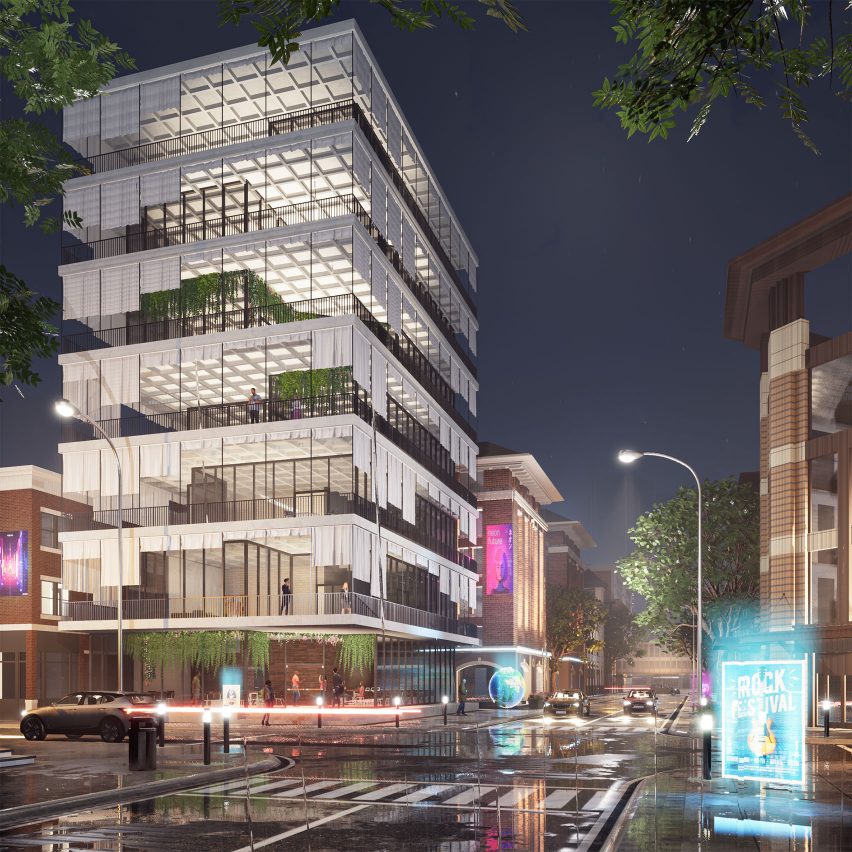Gaming technology can help architects "engage people in a more dynamic and inclusive way"
Visualisation techniques from video games could help planners and the public understand architecture, according to architects that use gaming software.
Fly-throughs and interactive videos could make proposals understandable during the consultation and planning processes, they said.
"A lot of people cannot understand [architectural] drawings," said Adam Laskey of architecture studio Marraum, which has used visualisation tool Twinmotion for planning submissions in Cornwall, England.
"We used this information to pitch it to neighbours during consultation periods and also councils," he said, referring to a one-minute fly-through visualisation of a residential extension.
Twinmotion is used to understand project conception
“We were creating videos for our planning applications to help them understand,” Laskey said.
"We make sure our clients can fully walk around their project before we progress past conceptual design and move into planning so they fully understand what they're working with," he added.

Laskey made the comments during a live Dezeen talk about how game engines are transforming the architectural industry.
The talk was held in August in collaboration with Epic Games, whose Twinmotion software allows architects to make use of visualisation technology developed for the gaming industry.
"Benefit of modelling and rendering in 3D"
"Trying to sell ideas through a series of still images is always quite strange," said Murray Levinson, partner at architecture practice Squire & Partners.
“I’ve always recognised the benefit of modelling and rendering in 3D and trying to get the spatial qualities of any project across to a client or the planning authority,” said Levinson, who uses Twinmotion to explain projects to both clients and planners.
“We can test out the height scale and bulk of those spaces," he said. "It comes to a point where we might show it to the planning authority to help us get planning consent."
"If you can engage with people through this type of software, it could give everyone more confidence about proposals which might be otherwise difficult to conceptualise in a 2D image," he added.
"We see games as a tool for engagement, for connecting people thinking about how they can become collaborative design environments," said Sandra Youkhana of architectural design studio You+Pea.
"I’ve been to some pretty sad [planning] consultation events and I think these kinds of tools can help to engage people in a more dynamic and inclusive way."
Playable planning notices
Youkhana and her partner Luke Pearson teach at the Videogame Urbanism studio, which forms part of the Urban Design Masters programme at the Bartlett School of Architecture in London.
The duo explained how their students used video-game technology to explore ways of creating a "playable planning notice" that would be more engaging than the paper notices that are pinned on lamp posts.
"The use of game systems and game engines is something people are becoming much more aware of," said Pearson.
"There's a whole science behind getting people to engage with things and structures and making a structured play that creates results."
The live talk coincided with Dezeen's Redesign the World competition, in partnership with Epic Games, which calls for proposals to rethink planet Earth.
Competition entrants must use Twinmotion to produce a 3D visualisation of their concepts and submit a video animation and still image, as well as 500 words of text explaining the proposal.
The Redesign the World competition is open for entries until 15 September 2021. See the brief and entry criteria for details of how to enter and watch the workshop for tips on how to use Twinmotion to create your entry.